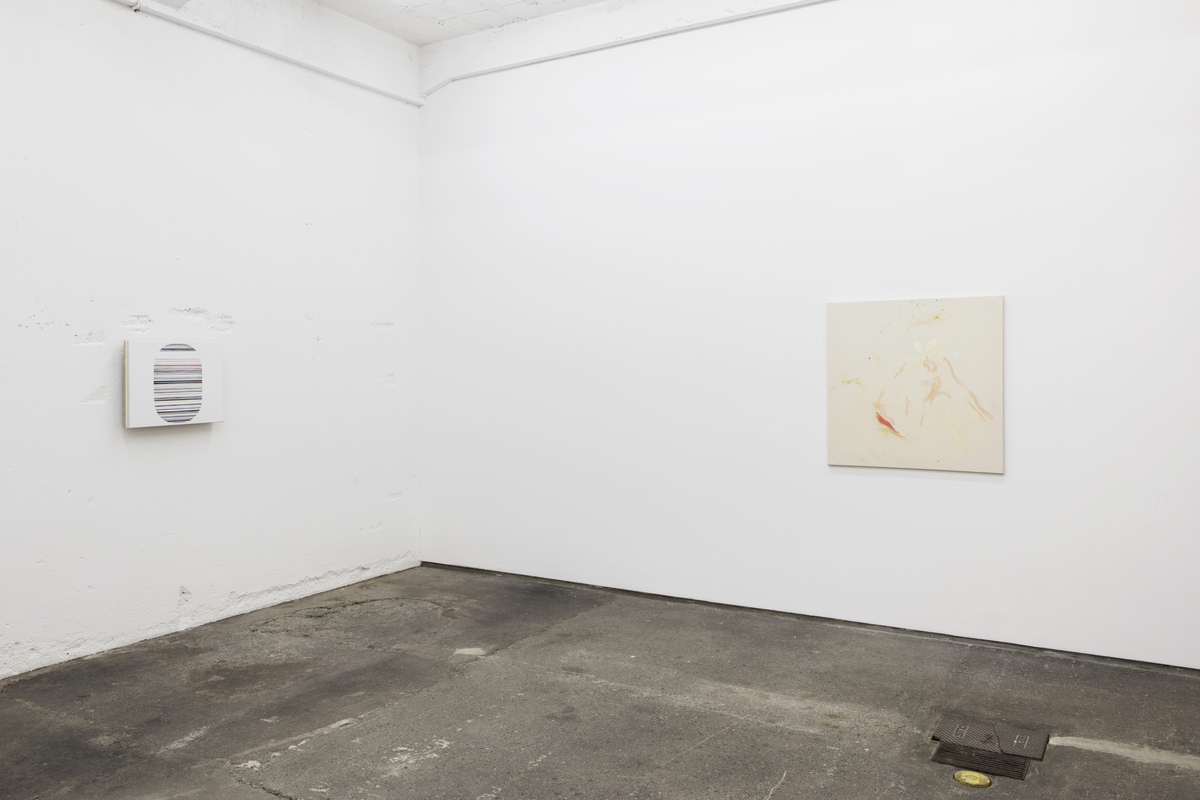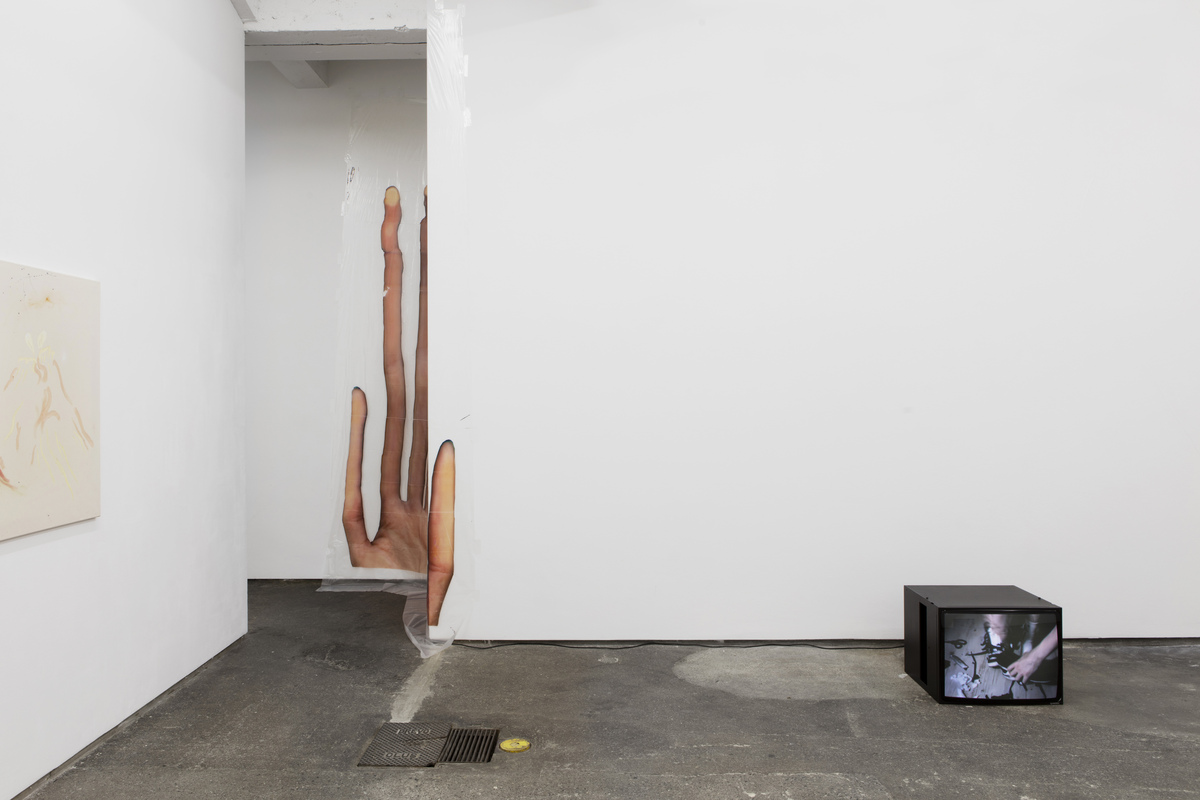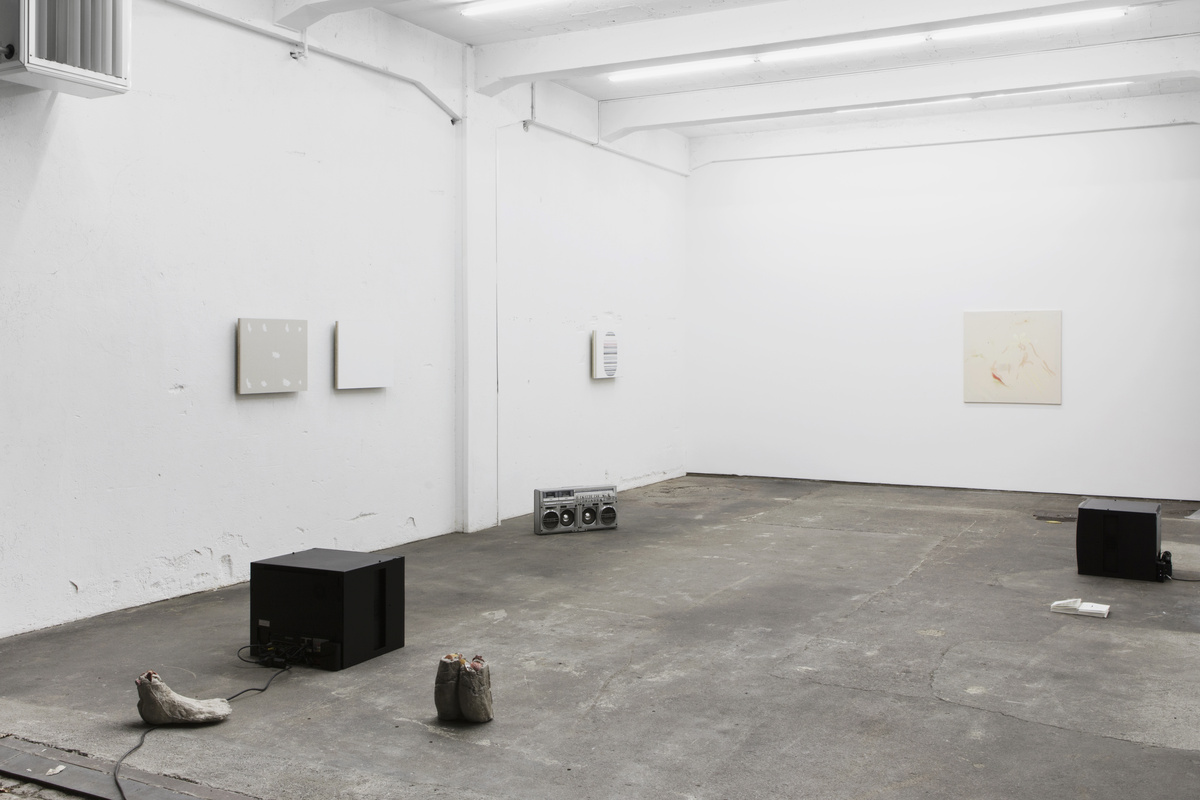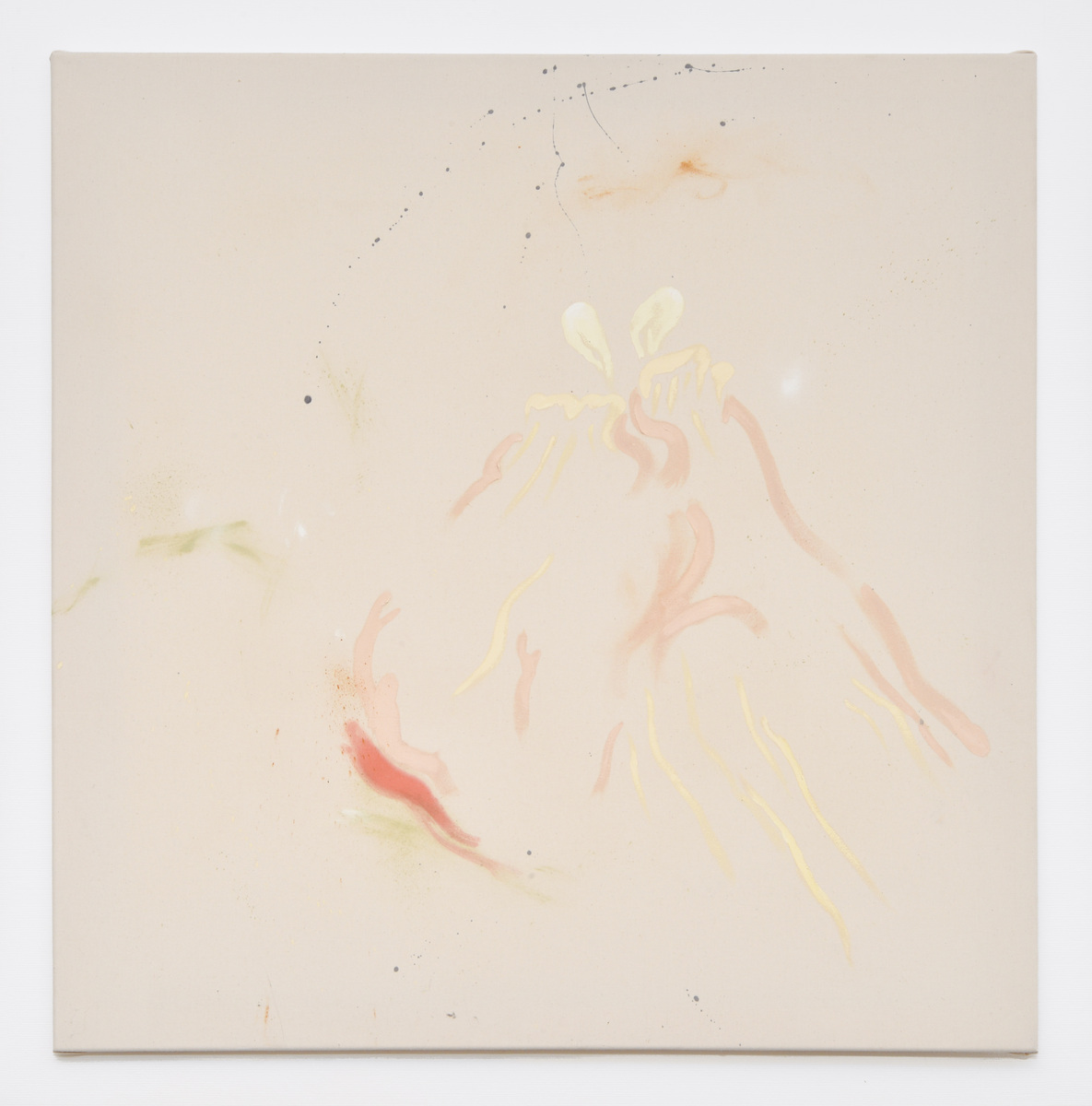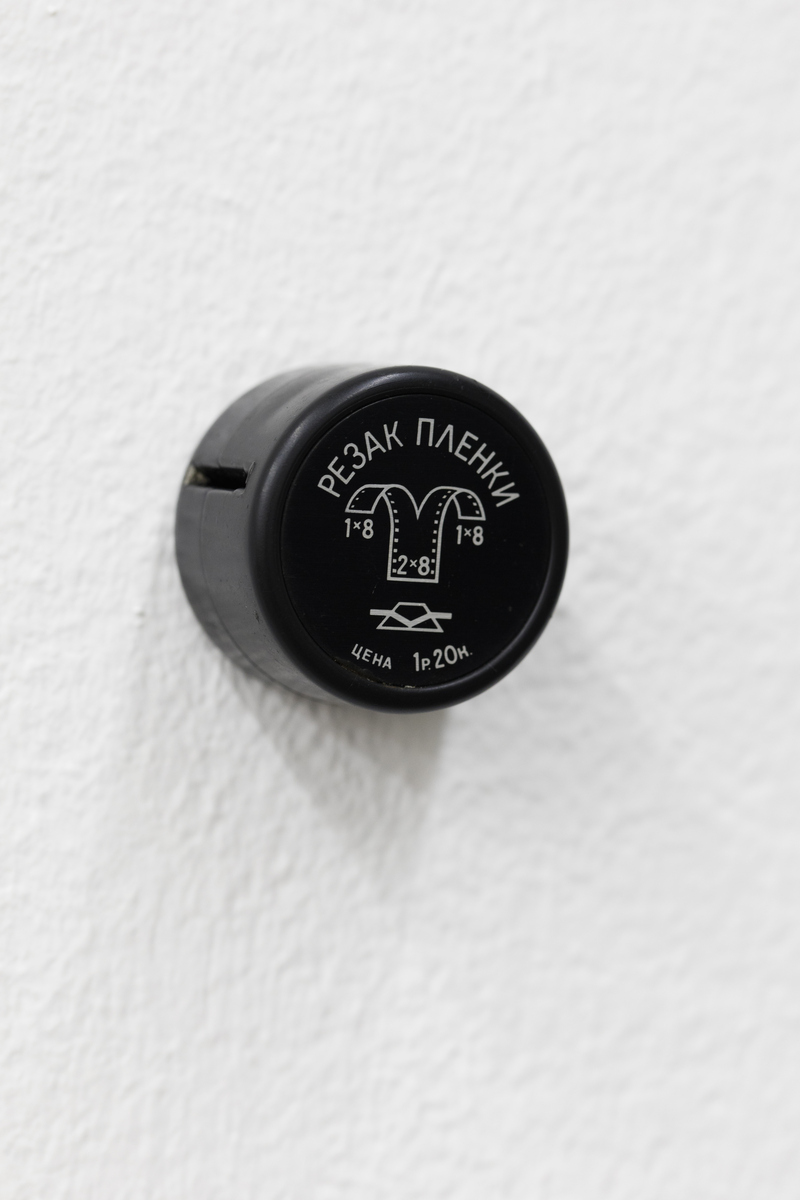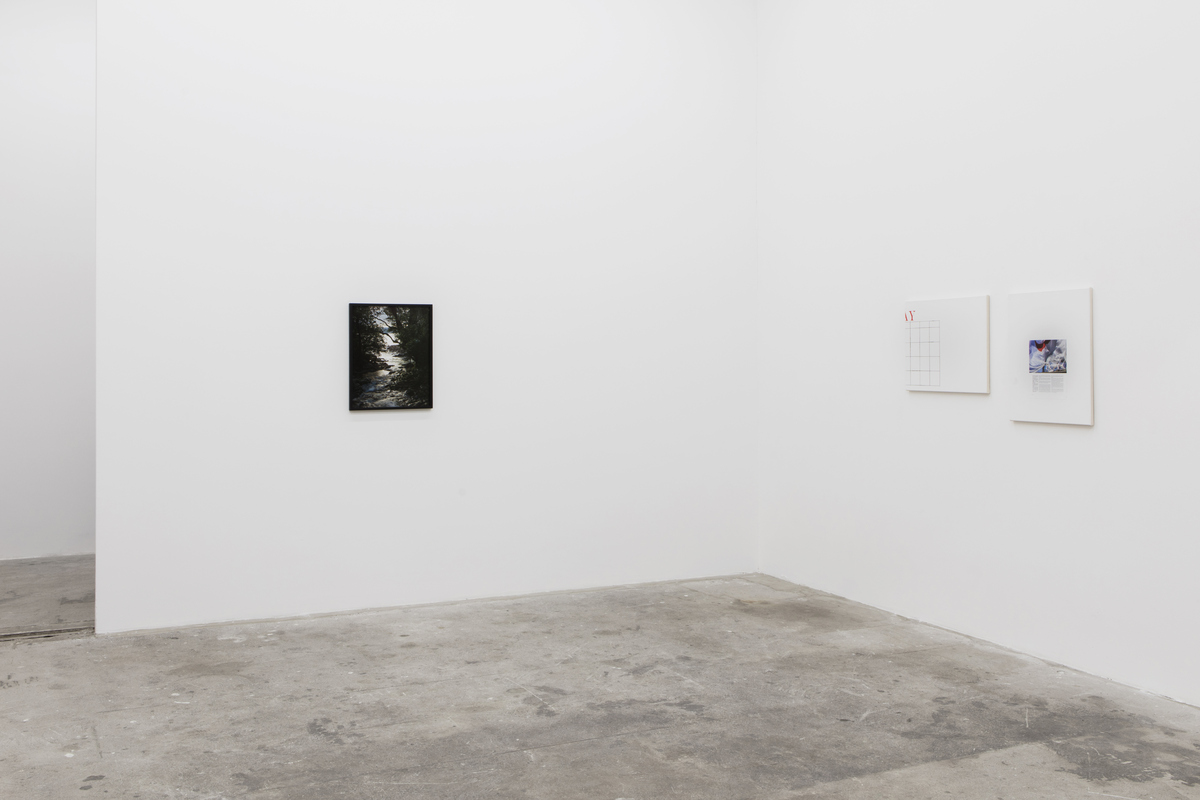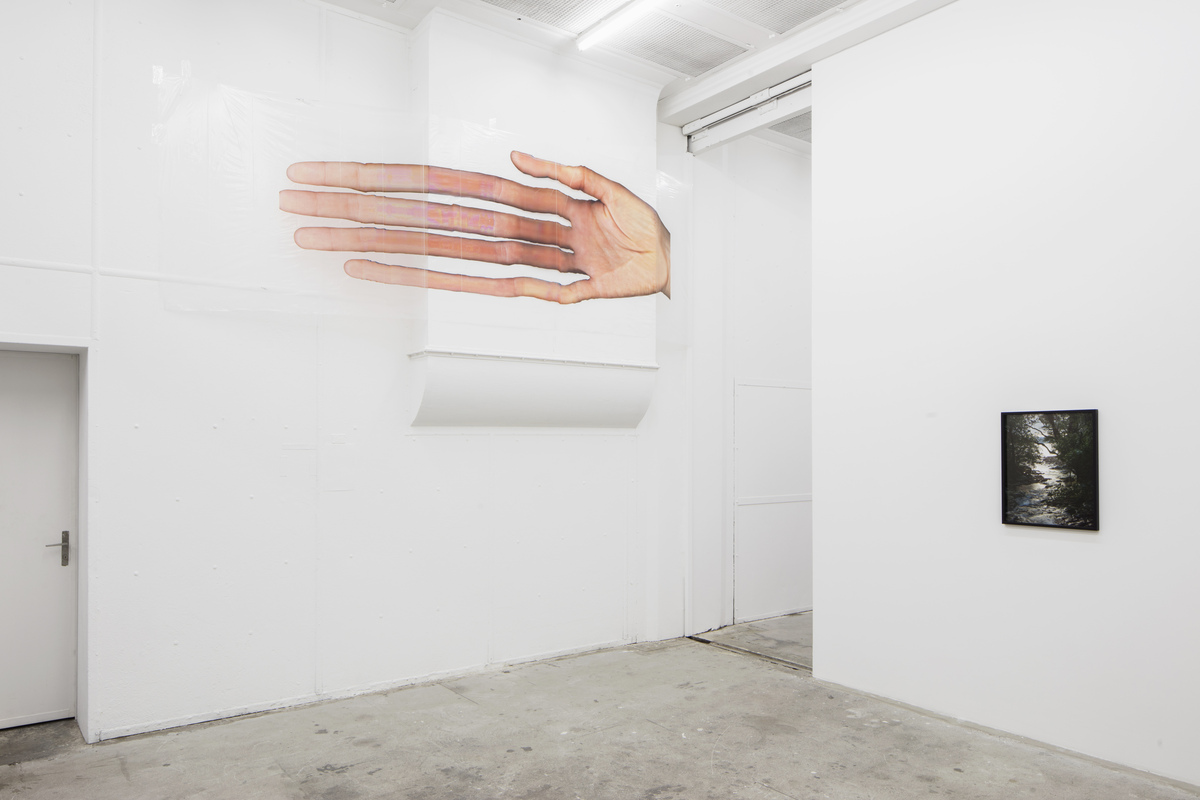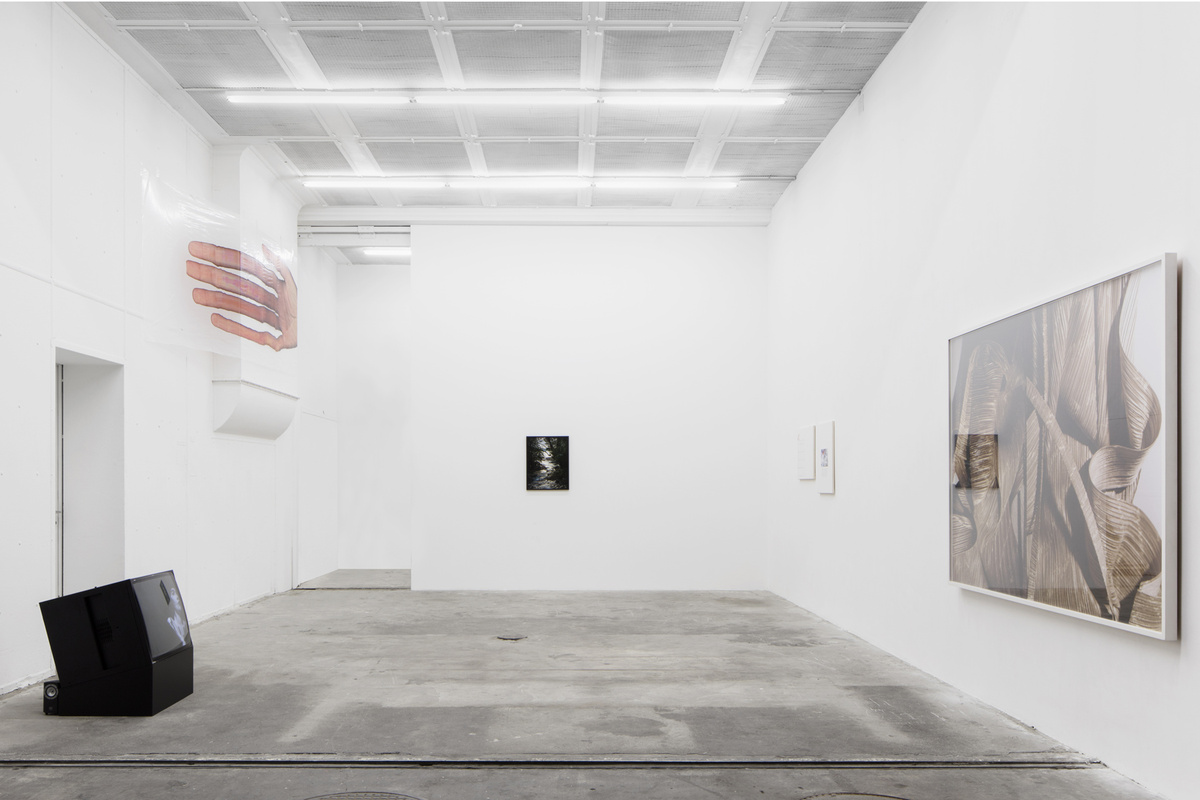Artists: Brice Dellsperger, Gina Folly, Erika Landström, Zac Langdon-Pole, Charlotte Prodger, Josephine Pryde, Willem de Rooij and Anna Zacharoff
Exhibition title: Windows Hung with Shutters
A Project by: Anna Goetz
Venue: RaebervonStenglin, Zürich, Switzerland
Date: November 28, 2015 – January 16, 2016
Photography: Conradin Frei, images copyright and courtesy of the artists and RaebervonStenglin, Zürich
The title Windows Hung with Shutters has been borrowed from Charlotte Prodger’s work :-* (2012). It describes a scene in such a way that one cannot infer the position from which the covered windows in question are being looked at – from the inside or the outside. It thus remains unclear whether the viewer’s eyes are being kept from wistfully wandering through the windowpane outside or whether a voyeuristic gaze is being denied access. The group exhibition Windows Hung with Shutters revolves around the ideas of desiring, exposing, staging, rejecting, and fetishising. It presents art works that deal with the relationship between the viewing subject and the object viewed. The works on display are united in their approach of raising viewers’ expectations only to thwart them right away. In this way, the artists reflect on established conventions of representation and reception.
Zac Langdon-Pole (*1988) shows five framed prints of the same romantic landscape shot. He had entrusted his former professor Willem de Rooji with taking a picture of a river flowing into the sea, at a New Zealand beach where the artist spent most of his childhood. This particular beach is not only important to the artist’s personal history, but also to that of the cartography of New Zealand: this is where, in the late 18th century, James Cook started to chart New Zealand, eventually placing the country on the Eurocentric map of the world.
On the back, Langdon-Pole complements each print with materials that inspired him during the development of this work, thus emphasising the many ways in which one and the same photograph may be read. This conceptual approach brings together both his personal and his artistic socialisation; moreover, it addresses various factors that shape personal and national (self-)images as well as their manifestation in an established art-historical iconography.
Do You Want Children (2010) and I Don’ t Want To Take Away Your Creativity (2010) by Josephine Pryde (*1967) depict pleated fabrics in large-scale close-up. These are light, easily transportable, technologically advanced materials that do not crease. They have been developed for use in the top end of the fashion industry. They seem to be loosely and softly draped over a form of some kind, possibly a body. The title Do You Want Children suggests a body that could become pregnant and change shape. Nothing is really shown or revealed. The fabric shrouds flat expanses with little sense of what lies below. The framed works are constructed in two panels, which interrupts the smoothness of the planes. A person is suggested, but not through figurative depiction, exactly. Pryde thus addresses different cultural coding of the relation between eroticism and covering/uncovering – and negotiates along the way, as it were, the classical categories of the medium of photography: staging, exposing, representing.
For Body Double 23 (2010), Brice Dellsperger (*1972) re-enacted and deconstructed a casting sequence from Brian de Palma’s Black Dahlia (2006). Dellsperger’s own camera perspective shifts back and forth between the point of view of the director, who gives instructions, and that of the casting camera, which serves to monitor the actress’s dramatic, hence representational ability. The footage from the casting camera in Body Double 23 closely resembles that of a surveillance camera. Obviously reprimanded and corrected by the voice from the off, the actress steps out of character again and again, her pose oscillating between that of her fictional persona and that of her own personality. Indeed, she increasingly blurs this distinction on purpose, implicitly questioning the relationship between image and self-image as well as their constructedness.
Willem de Rooij (*1969) has been working on his series of flower bouquets since 2002, referring back to a classical motif in the history of art, notably in still lifes of the Dutch painting tradition. From time immemorial, flower arrangements have been symbols of the yearning for the exotic, which in an assemblage of cut and tied up flowers manifests itself as domesticated. Besides, flowers have been recurrent vanitas symbols. But de Rooij’s bouquets do not literally show life’s transience, as the artist has a florist replace the flowers week after week, before decay sets in completely. De Rooij positions each work in the spatial-temporal context of the respective exhibition venue and uses the strategy of shared authorship to refer to issues of appropriation and reinterpretation. The bouquets are part of his preoccupation with social and political symbols as well as pictorial icons. Bouquet IX (2012), presented at Windows Hung with Shutters, consists of numerous different flowers of the same colour and deals in this way also with questions of identity and difference.
Gina Folly’s (*1983) work Conditions I + II (2015) relates to the spatial and temporal dimensions of the exhibition as well, quite literally taking possession of the exhibition space. The artist printed scans of her own hands on plastic foil at an extreme magnification. This foil has been mounted on the wall in such a way that the hands seem to directly interact with the display, apparently tracing its contours and appropriating it. Thus the hands define the exhibition space as part of their pictorial space. With their disproportionate size they gain in autonomy and enter into a direct dialogue with the exhibition architecture. Hands are like feet widely regarded as the most fetishised body parts. Folly’s Conditions I + II impart an ambivalent impression, hovering between sensual desire and ruthless appropriation.
Erika Landström (*1984) follows up on Folly’s examination of the relationship between picture, pictorial space, ground, and support, incorporating temporary exhibition wall and object on display, and exhibition space as references into her work: Landström presents exhibition walls – made from plasterboard in small, convenient, and off-the-shelf canvas sizes – as autonomous wall objects. She shows them in various stages of production: roughly trowelled, plastered white, painted, and hung with a precisely fitting painting.
By means of her objectual pictures composed from wall segments, Landström discusses the exchangeability of conventional modes of presentation and representation in both painting and standard exhibition practice.
Anna Zacharoff’s (*1987) raw canvases suggest the silhouettes of crabs, shells, snails, and fishes. Neither perspective nor details can be made out. Her creatures are depicted disproportionately large, confronting the viewer as uncanny beings of equal size and rank. Zacharoff neither uses a primer to produce a background nor does she create the illusion of a pictorial space. She perceives architecture as a confining category, preferring spaces without architectural frames of reference. She flirts with the viewer’s expectation, who wants to see a concrete representation of something familiar in the wraithlike, beguiling depiction, and plays stereotypes of classic painting off against any kind of anticipation. She hints at traditional modes of representation in landscape or still life painting, but makes them clash with one another.
Charlotte Prodger’s (*1974) work :-* (2012) shows two ripped YouTube videos from anonymous users. Both clips enact action sequences with Nike trainers, the fetishes of modern pop culture. The first video documents a staged, slow dissection of the pair of shoes. The objects of desire are being cut up, exposed to their very core, and violently deprived of their autonomous status as objects. The sequence is reminiscent of a ritual act of total destruction and overt appropriation as a sign of absolute worship. The second video shows two identical pairs of trainers that, by the play of their wearers, appear to be fervently dancing and flirting with each other. Prodger complements the two videos with a separate soundtrack, played back in analogue mode on a boombox. The soundtrack reproduces the feed on the two videos, read aloud in a monotonous voice: comments of anonymous users are combined with the e-mail exchange between the artist and an acquaintance on a joint night of clubbing.
Zac Langdon-Pole, motherland, 2015
Anna Zacharoff, Untitled (Happy New Christmas), 2015
Charlotte Prodger, :-*, 2012
Charlotte Prodger, :-*, 2012
Anna Zacharoff, Taucher (Feet), 2015
Gina Folly, condition II, 2015
Josephine Pryde, I Don’’t Want To Take Away Your Creativity, 2010
Brice Dellsperger, Body Double 23, 2010
Willem de Rooij, Bouquet IX, 2012





